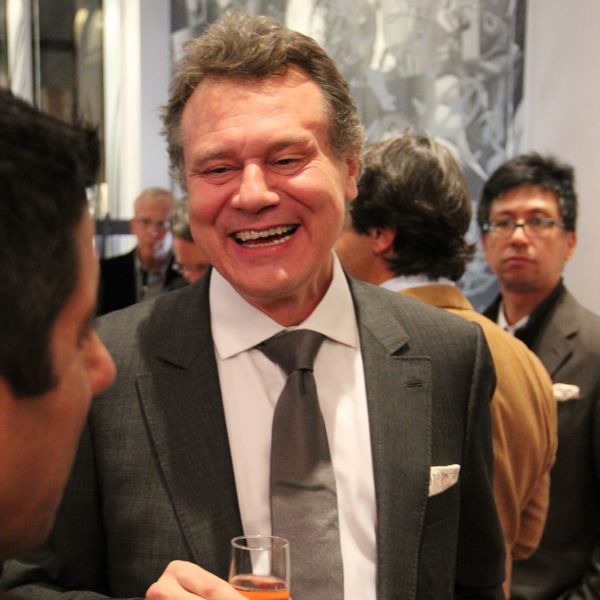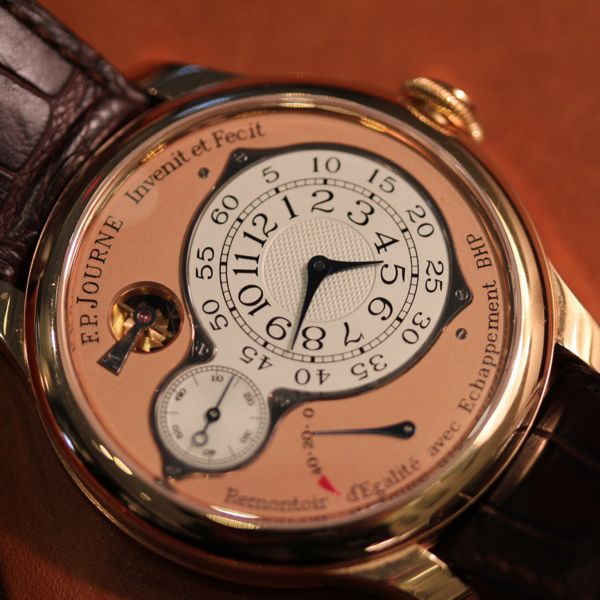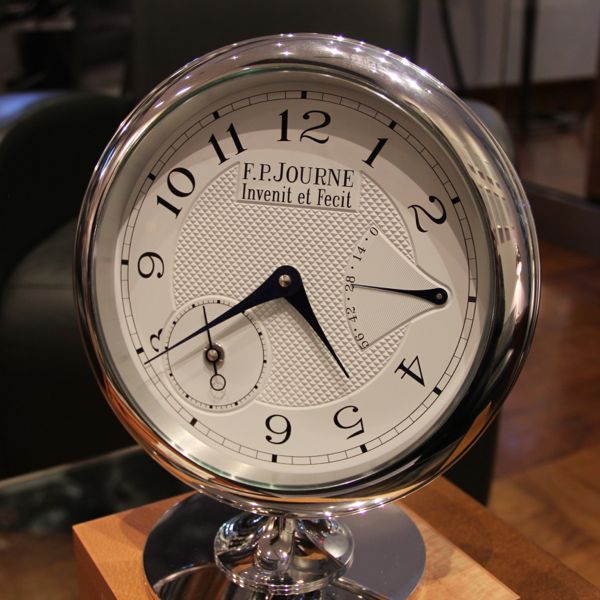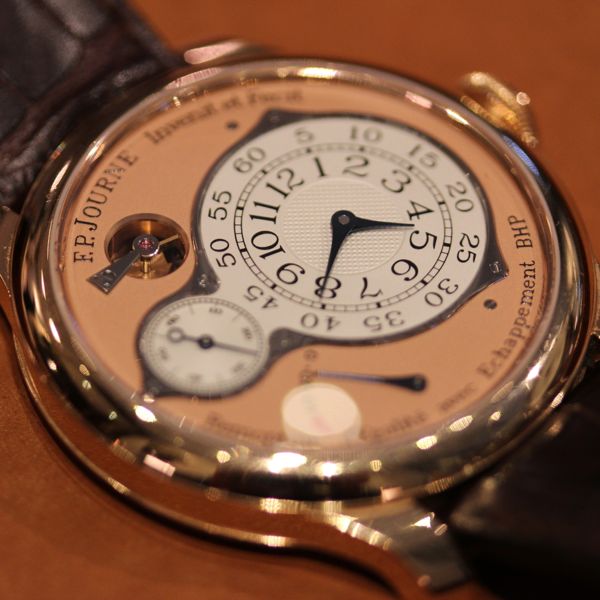
Last week’s visit was my first chance to handle the Chronometré Optimum, as well as sit down with Mr. Journe himself to discuss the timepiece in detail.
The first points to hit on in a discussion of this incredible timepiece is what it really is all about, what the motivation behind creating it was, and why it is worthy of note. In his own words, Mr. Journe explained to me that the concept was to manufacture a mechanical wristwatch capable of “optimum” performance in time measurement – a concept he had been envisioning since the late 1980’s, but which he admits he did not yet have the “intellectual maturity” to accomplish at the time. He went on to explain that being the sole owner of an independent brand meant that “there are no deadlines,” so innovation comes on its own timeframe. The components for the Chronometré Optimum began shaping up in 2001, and was first officially unveiled as the finished product earlier this year.
Aside from striving for incredibly accurate timekeeping, the other primary purpose for the manufacture of this timepiece is service longevity. As Mr. Journe explained, he only considers a piece to be optimized if it can keep accurate time for an extended period – not just within the power reserve, but over years of service. This was the reasoning behind the design of the double barrel movement, revolutionary in that the mainsprings are manufactured from titanium to minimize weight and inertia – the enemies of accuracy. The movement also features a remontoire for added accuracy and delivery of constant force. The bi-axial escapement design is also “dry,” meaning no lubricants are required or recommended. This design allows for operation without loss of amplitude for 50 hours – absolutely astounding. With this design, Mr. Journe expects the service intervals to be at least ten years apart. This is incredible for a movement capable of this accuracy.

The Chronometré Optimum features a power reserve indicator and two registers on the dial (one for hours and minutes and another for sweep seconds) but doesn’t feature any additional complications such as a date or day function. “Never put a date on chronometers,” Journe says, as they cause too much time loss with additional escapements. There is, however, a dead-beat seconds register on the case back, included as a “nod to collectors,” who understand the history of the dead-beat complication. Curiously, the register runs counter-clockwise, which piqued my interest. When I asked him about it, I half expected some sort of vague, intellectually masturbatory response about the design being so common in the business. Surprisingly, the response I received was clean and simple, “Putting in the additional components to reverse it wouldn’t be efficient, and would make the piece unnecessarily harder to service”. This was an incredibly eye-opening insight into the mind of a master watchmaker that I have come to truly appreciate.
Mr. Journe recently stepped down from running the day-to-day operations of the company so he could “return upstairs to his work bench, where he belongs.” He spends a fair amount of time working with his young team of watchmakers, training them to think about watchmaking in a manner differently than other major manufacturers. His watchmakers assemble their timepieces from start to finish – they are experts in the whole process, unlike other assembly line manufacturers, with specialists for each component down the line. Journe feels strongly that each watchmaker must truly understand the timepiece as a whole, and can address the manufacture or servicing of any one of their wristwatches.

The Chronometré Optimum is truly an incredible timepiece and a work of art, and although my understanding of the inner complexities of the movement barely scratched the surface, it was more than enough to be duly impressed. There will be a total of 16 available in 2012 and a goal of 60 pieces in 2013. They are available in 40 and 42mm case sizes and clad in either Platinum or Rose Gold. Prices start at $86,400 for the smaller size in Rose and top out at $92,400 for the 42mm Platinum.
When I asked Mr. Journe what would come next, he laughed and told me it only gets more difficult from here. He believes that the next major innovation will come in manufacturing a watch without a mainspring at all. In his words, “mainsprings are the cause of friction and time loss,” and as long as they exist, mechanical timekeeping can never be perfect. Above all, my discussion proved that Mr. Journe’s company is a business built on passion. He values quality over quantity, and continually turns down offers from the big watch conglomerates to sell his company. As he puts it, “What would I do with all of the money? Go fishing? I don’t fish. I make watches, it’s what I love to do.”
James Lamdin is a freelance automotive and watch journalist based in New York City. He is also the Founder of www.analogshift.com , an online boutique for a curated selection of exceptional vintage wristwatches.
